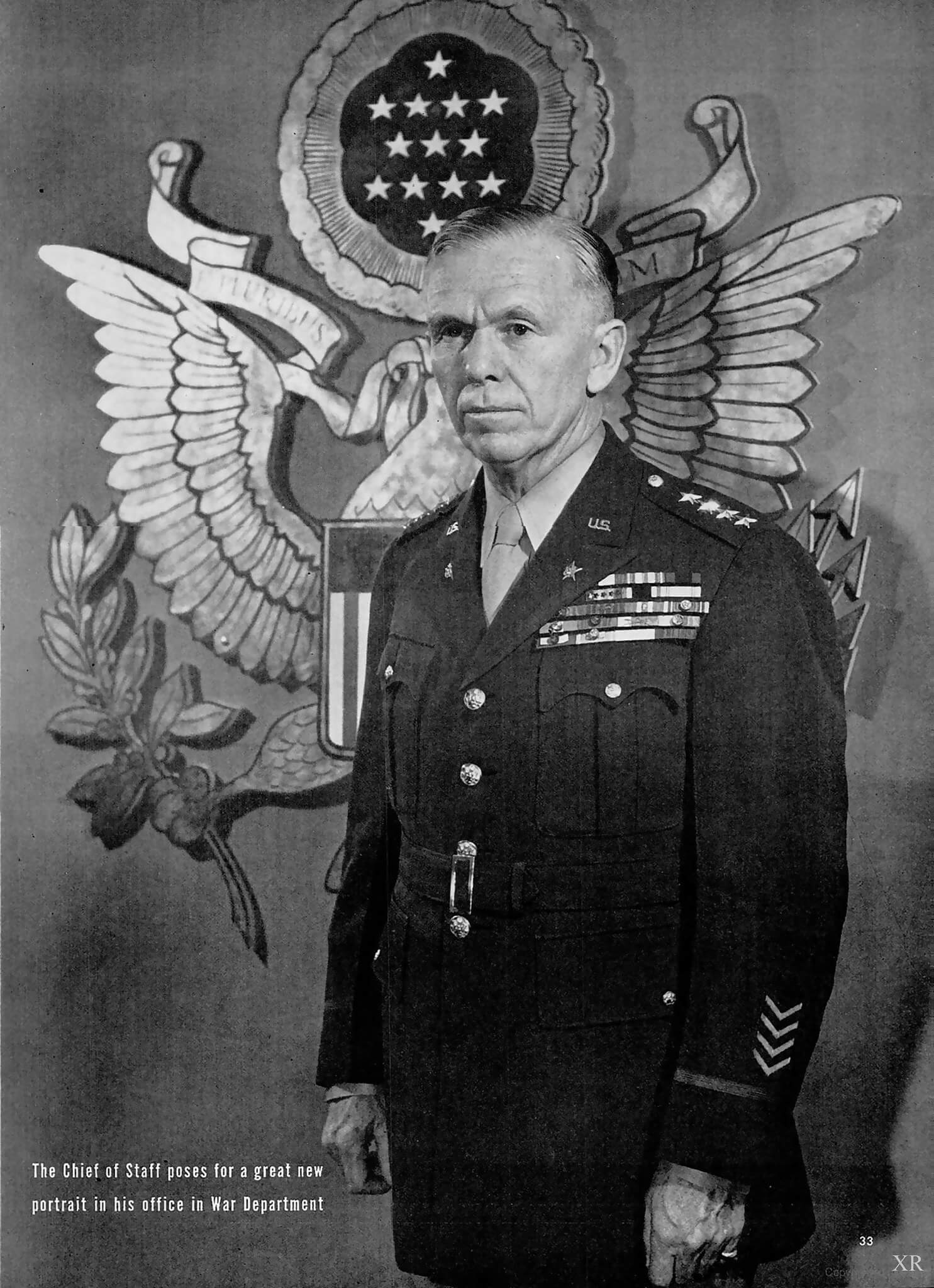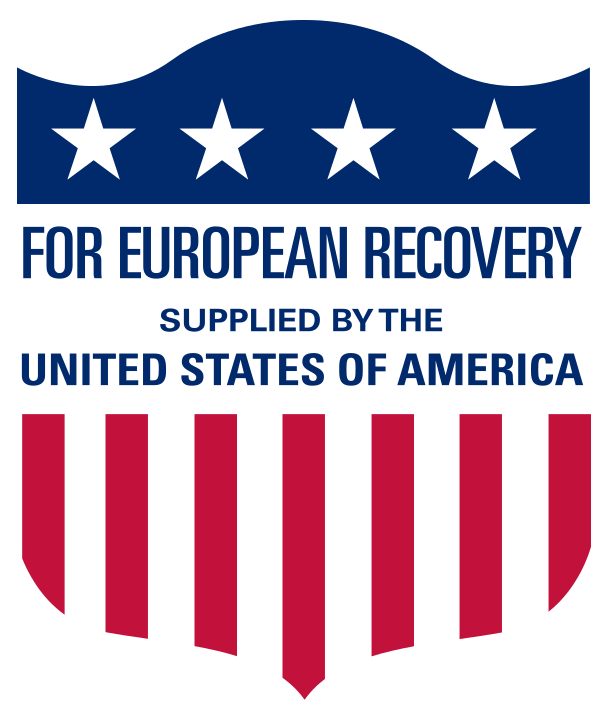
The Necessary Marshall Myth
This year marks the 70th anniversary of the passage of the Economic Cooperation Act through the American Congress in April 1948. Considering the existing literature on the topic, it is hard to establish a new viewpoint on this well-trodden ground. Instead, it is worth revisiting the Plan from a different perspective, for instance through the lens of political myth.
In April 1948, ten months had passed since Secretary of State Marshall’s speech at Harvard University in June 1947, and the European recovery programme would soon be in full swing. This seminal moment in transatlantic relations is rightly being marked by a host of US public diplomacy activities, which have taken on a greater significance in the context of the current US administration’s rejection of liberal internationalism. It has also triggered a new round of historical re-assessments of the Plan’s greater significance, led by the recently-published work of Benn Steil of the Council on Foreign Relations1 .
According to Henry Tudor, myths are dramatic narratives that assist with the experience of reality. Myths are therefore positive stories that provide a heroic interpretation of the past, serving a purpose for explaining the present and justifying decisions regarding the future 2 . A myth is effectively political when its coherent interpretation has an ideological edge – it sets out a compelling moral narrative, establishing right from wrong, the good guys from the bad guys, and how the good guys won 3 .
It should be emphasized that referring to the Marshall Plan is in no way a criticism. It also does not mean that the Plan ‘didn’t happen’ – mythologizing something doesn’t mean the events are fabricated. Myths are simply powerful narratives that give a particular meaning and purpose to the past, upon which arguments and justifications can be based. The Marshall Plan was in every way a remarkable series of events, and only remarkable events can be mythologized.
The basis of the Marshall Plan as myth is the declaration that the provision of aid by the United States after World War II ‘saved’ the peace for Western Europe, as much as the US military forces saved the war. This interpretation has been perpetuated by the majority of historical studies, which have pictured an economically destitute Europe that by 1947 was unable to generate its own home-grown recovery without a radical change of circumstances. That the United States was prepared to take the moral responsibility to make that change possible provides the necessary heroic element 4 .
The Plan’s mythology contested
This point of view has been contested, mainly along two lines: The Plan was unnecessary because European recovery would have occurred anyway; and the Plan was not so much an act of unprecedented generosity by a great power, as a large-scale push to reconfigure European economic management at all levels, re-orientating these economies towards the United States. The first critique was put forward most strongly by Alan Milward who, in the words of Harvard professor Charles Maier, “sought to remove the mythology and reverence that surrounded [the Plan]”5
.
The second has been developed by among others Scott Newton, Bradford De Long and Barry Eichengreen, who have argued for the Plan to be seen not as foreign aid but as a major structural adjustment programme. By contributing to stabilized currency values and a positive investment climate, and acting as a catalyst for a new social contract between unions and management, the initiative paved the way for rapid productivity growth in conditions that, for a while at least, did not generate inflationary pressures.
The basis of the Plan as myth is the declaration that the provision of aid by the US after World War II ‘saved’ the peace for Western Europe, as much as the US military forces saved the war
Nevertheless, these scholars still emphasize that “Because the roots of postwar Europe’s ‘super-growth’ are not adequately understood, it is difficult to isolate the contribution of the Marshall Plan (…) the Marshall Plan was but one of several factors contributing to observed outcomes.”6 . Well-judged historical skepticism such as this is not the source of myth.
Renewed efforts to question the Plan’s mythology have begun to emerge. Thus Michael Cox and Caroline Kennedy-Pipe argued shortly before the 60th anniversary that “it was American policies as much as (and perhaps more than) Soviet actions that finally led to the division of Europe and thus to the Cold War itself”7 . In doing so, they acknowledged that such a point of view threatened to place them within the realms of revisionist Cold War history and therefore bedfellows with more ideologically-charged leftist critiques. Benn Steil’s recent book also makes this claim, suggesting that the Plan’s halo may be beginning to slip.
The foundation stone for ongoing transatlantic cooperation
This may not be a good thing. The point here is that myths like the Marshall Plan are necessary for helping to maintain a particular perspective on international affairs. Removing the mythological status would mean reducing the Plan to being just another ‘foreign policy decision’, with no specific significance for ongoing relations. Anniversaries are not granted to all events, that would be ill-advisable, if not impossible. Not every foreign policy initiative can or should be regarded as heroic. At stake here is not only the effect of the Plan on the European way of life, but also, crucially, the long-running meaning of the Plan for a type of US engagement with the rest of the world. For this, the myth holds a powerful political use-value.

The mythologizing of the Plan also has an important public diplomacy dimension. The regular celebration of anniversaries – 40th, 50th, 60th, 70th – creates the perfect setting for repeatedly reviving the myth and in so doing consistently pointing to the Plan as the foundation stone for ongoing transatlantic cooperation.
Presidential commemorations
It is worth looking at a few pronouncements made on previous anniversaries, in order to gather together some of the key features that have been projected over time by US presidents. In 1957, on the tenth anniversary, President Eisenhower sent a public message to George Marshall that emphasized the can-do practicality of the Plan:
“[W]e can take courage and confidence from our experience in this program – from the proven demonstration that even the most intricate of human problems are soluble – from the knowledge that mankind is still capable of moving forward with imagination and faith to build a safer and happier world.”8
For President Kennedy on the 15thanniversary, the Plan represented a springboard to tasks further afield:
“The Marshall plan succeeded because it was conceived and operated on a scale commensurate with the task. It was an extraordinary reply to an extraordinary challenge (…). Now we face another extraordinary challenge – the task of helping the awakening nations of Asia, Africa, and Latin America catch up with the 20th century. Here, once again, a half-hearted response will not do …”9
.
For Nixon, the circumstances of the 25th anniversary of the Plan in 1972 were slightly different. Transatlantic relations were under stress. In August of the previous year, Nixon had announced the introduction of a 10 percent surcharge on US imports and the end of convertibility of the US dollar into gold. The decision marked a new era of international financial management that forced US allies to recalibrate the value of their own currencies around a now floating US$.
In the midst of this uncertainty, Nixon looked to shore up transatlantic unity by drawing on the Plan’s mythological power. He did so via a message to the ministerial council of the Organisation for Economic Cooperation and Development (OECD), the successor to the Marshall Plan-era Organisation for European Economic Cooperation (OEEC):
“The Marshall Plan was a milestone of a policy which has been remarkably steadfast in its two-fold purposes of building a healthy European economy and founding our American relationship with Europe on a basis of partnership in political, economic and security fields. At the time, the United States gave generously of its resources, recognizing that its strength imposed special responsibilities.”10
.

Nixon went on by calling for a renewed partnership for global action, with the transatlantic axis as central:
“Now, on this anniversary, we face a new world and new tasks. With restored strength in Europe and Japan comes the need to redefine those early post-war responsibilities (…). And we must extend the spirit of international cooperation – the spirit of the Marshall Plan – by assisting the developing nations through an adequately funded aid effort and responsive trade policies.”
Lastly, here is President Clinton, speaking at the 50thth anniversary of the Plan at a commemorative dinner in The Hague:
“Marshall’s vision, as has been noted, embraced all of Europe. But the reality of his time did not. Stalin barred Europe’s Eastern half, including some of our staunchest allies during World War II, from claiming their seats at the table, shutting them out of Europe’s recovery, closing the door on their freedom. But the shackled nations never lost faith, and the West never accepted the permanence of their fate (…). Now the dawn of new democracies is lighting the way to a new Europe in a new century, a time in which America and Europe must complete the noble journey that Marshall’s generation began, and this time with no one left behind.”11
The lasting importance of the Plan’s myth
These statements by four presidents indicate a set of key characteristics. There is the can-do, pragmatic approach to solving even the most complex of problems, the enlightened leadership that believed in achieving the extraordinary, the forging of a lasting transatlantic partnership that was for mutual benefit, and the determination that the Plan laid the basis for further peace and prosperity on a global scale. There is, above all, a confidence and trust being expressed in US capabilities.
This is a powerful narrative, one able to sustain the ongoing claim that the combination of the United States and Europe provides the motor for effective global governance. It also confirms how the Plan has been consistently used to justify a benevolent internationalism as the central plank in US foreign policy. This was emphasized by Steil in a recent op-ed, where he argued that the multi-level goals of the Plan represent the kind of forward-looking policy that was far more in America’s interest than a misguided lurch into ‘America First’.12 .
The Marshall Plan myth is a valuable political tool for arguing in favour of an enlightened US-led world order, where cooperation and mutual benefit trump narrow-mindedness and self-defeating chauvinism. Long may that continue.
On April 25th, the IOS Platform on EU Policy and Politics and the Utrecht University History of International Relations group organise a seminar with Giles Scott-Smith as well as President of the German Marshall Fund of the United States Karen Donfried. During the seminar they will reflect upon the history of the transatlantic partnership, as well as the present and future challenges that it faces.
- 1Benn Steil, The Marshall Plan: Dawn of the Cold War, Oxford: Oxford University Press, 2018
- 2Henry Tudor, Political Myth, Santa Barbara, CA: Praeger, 1972.
- 3Christopher Flood, Political Myth: A Theoretical Introduction, New York: Routledge, 2002, p. 42.
- 4Ernst van der Beugel, From Marshall Aid to Atlantic Partnership: European Integration as a Concern of American Foreign Policy, New York: Elsevier, 1966; Hadley Arkes, Bureaucracy, the Marshall Plan, and the National Interest, Princeton: Princeton University Press, 1972; Richard Mayne, The Recovery of Europe 1945-73, Garden City, NY: Anchor Books, 1973; John Gimbel, The Origins of the Marshall Plan, Palo Alto: Stanford University Press, 1976; Charles Mee, The Marshall Plan: The Launching of the Pax Americana, New York: Simon & Schuster, 1984; Herman van der Wee, Prosperity and Upheaval, Berkeley: University of California Press, 1986; Michael Hogen, The Marshall Plan: America, Britain, and the Reconstruction of Western Europe 1947-52, Cambridge: Cambridge University Press, 1987.
- 5The Independent, Alan Milward: Economic historian celebrated for his analyses of the post-war European project, 6 December 2010.
- 6J. Bradford De Long & Barry Eichengreen, ‘The Marshall Plan: History’s Most Successful Structural Adjustment Program’, University of California at Berkeley, NBER/CEPR, October 1991. See also Scott Newton, The Global Economy 1944-2000, London: Arnold, 2004, p. 40.
- 7Michael Cox & Caroline Kennedy-Pipe, ‘The Tragedy of American Diplomacy? Rethinking the Marshall Plan’, Journal of Cold War Studies , 7 (2005), p. 102.
- 8Dwight D. Eisenhower: ‘Message to General of the Army George C. Marshall on the Tenth Anniversary of His Address Setting Forth the Marshall Plan’, June 5, 1957. Online by Gerhard Peters & John T. Woolley, The American Presidency Project.
- 9John F. Kennedy: ‘Message to the Guests at a Dinner Marking the 15th Anniversary of the Marshall Plan’, April 6, 1963. Online by Gerhard Peters & John T. Woolley, The American Presidency Project.
- 10Richard Nixon: ‘Message to the Ministerial Council of the Organization for Economic Cooperation and Development on the 25th Anniversary of the Marshall Plan’, May 24, 1972. Online by Gerhard Peters & John T. Woolley, The American Presidency Project.
- 11William J. Clinton: ‘Remarks at a Ceremony Commemorating the 50th Anniversary of the Marshall Plan in The Hague’, May 28, 1997. Online by Gerhard Peters &John T. Woolley, The American Presidency Project.
- 12Benn Steil, ‘The Marshall Plan and “America First‘’ ‘, Project Syndicate, 4 August 2017.




3 Reacties
Load comments
Marshall aid, capital flight and today's foreign aid
Myths about foreign aid can be, as this insightful article points out, valuable tools of statecraft. But they can also help obscure inconvenient truths about financial flows and who gains from them. As the writer almost certainly knows, the Americans applied their Marshall largesse crucially to offset substantial (and probably larger) amounts of money flowing across the Atlantic in the opposite direction: capital flight from Europe. Given the persistence today of poor-to-rich flows (licit and illicit), the mythologies and optical illusions at work around foreign aid these days appear to work in ways not so different from those surrounding Marshall aid.
Marshall Plan
The Marshall Plan provided stability in Western Europe at a time communism could have made headay in several places, especially Italy. I don't think without the plan and its double headed approach of providing goods and allowing the proceds to be invested in reconstrution recovery would have been possible
Marshall planner to the worst
I think that helping the Europe back in the early ages before WWII was a smart move to aid and help. In future times, helping those who are in need of aid brings to help those who have helped them. Helping those who are in need leads to become a partner in my eyes.
-Ryan, http://www.landscapeofhouston.com
Reactie toevoegen